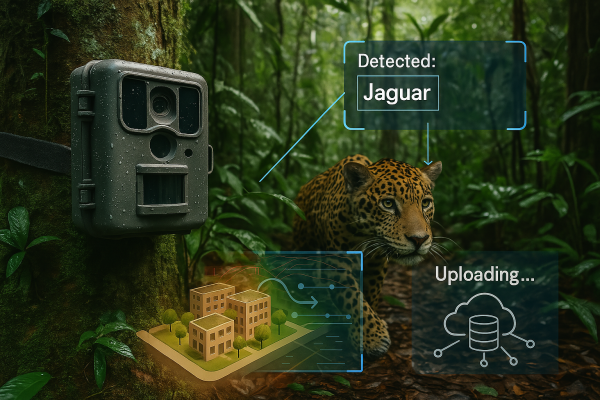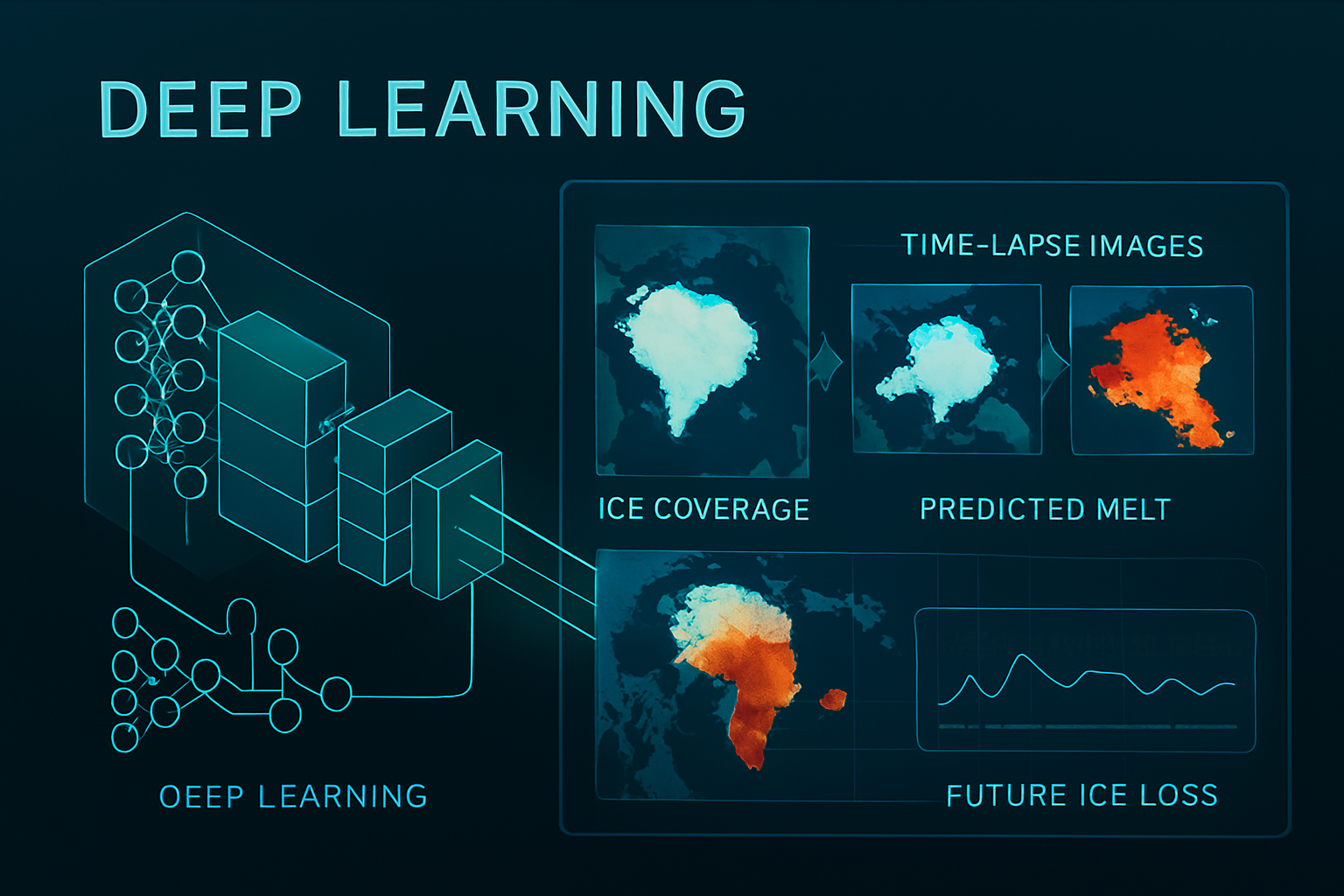
Biodiversity—the immense variety of life forms that populate our planet—is under threat. From habitat destruction and climate change to pollution and poaching, species and ecosystems are disappearing at an alarming rate. Traditional conservation efforts, while crucial, often struggle with limited resources and incomplete data.
Enter Artificial Intelligence (AI) and machine vision: a powerful technological duo capable of revolutionizing how we monitor, protect, and restore biodiversity. These technologies are providing scientists and conservationists with new tools to observe wildlife, map habitats, and predict threats with unprecedented accuracy and efficiency.
In this article, we explore how AI and machine vision are being deployed in biodiversity conservation and what the future holds for these innovations.
Understanding the Role of AI and Machine Vision
Together, they allow machines to recognize species, count populations, track animal movements, and even identify illegal activities such as deforestation or poaching.
Applications of AI and Machine Vision in Biodiversity Conservation
Using thousands of labeled images, machine vision models can be trained to identify plant and animal species with high accuracy. This technology is particularly useful in:
Platforms like Microsoft’s AI for Earth and iNaturalist employ these models to help both experts and citizen scientists catalog biodiversity efficiently.
Machine vision systems analyze satellite and drone imagery to detect changes in vegetation, forest cover, coral reefs, and wetlands. This allows conservationists to:
AI-enabled collar cameras and GPS trackers allow for real-time animal monitoring. Computer vision software interprets camera footage to recognize behaviors like feeding, mating, or distress, which can help tailor conservation efforts more precisely.
AI and vision systems are used in protected areas to scan live video feeds for suspicious human activity or vehicles. They can trigger alerts and deploy drones or rangers in response, significantly reducing poaching incidents.
Example: The nonprofit RESOLVE developed TrailGuard AI, a camera system with built-in AI that identifies human presence and alerts park rangers before poachers can act.
Although not visual, this machine-learning cousin of machine vision analyzes sounds from forests or oceans to detect species such as frogs, birds, or whales—often a better method for elusive or nocturnal species.
AI helps combine visual, acoustic, and environmental data to model biodiversity hotspots, forecast extinction risks, and recommend conservation actions. These insights can guide protected area design and resource allocation.
Benefits of AI and Machine Vision in Conservation
Challenges and Ethical Considerations
The Future of AI in Biodiversity Protection
As AI and machine vision technologies become more accessible and accurate, we can expect to see:
Conclusion
AI and machine vision are transforming biodiversity conservation from a reactive discipline into a proactive, data-driven science. By automating tedious tasks, providing real-time insights, and scaling global monitoring efforts, these technologies are essential allies in the fight to preserve our planet’s ecosystems and the countless species they support. While challenges remain, the integration of AI into conservation promises a smarter, faster, and more effective future for protecting life on Earth.

Water is one of the most vital natural resources on the planet, yet it is increasingly under pressure due to population growth, climate change, urbanization, and pollution. Managing water efficiently—across agriculture, urban utilities, and ecosystems—has become a pressing global challenge.
Enter Artificial Intelligence (AI). By leveraging machine learning, data analytics, and automation, AI offers transformative potential in how we monitor, allocate, and conserve water resources. This article explores how AI is being applied in water resource management and the tangible benefits it offers for sustainable development and environmental protection.
What Is Water Resource Management?
Water resource management involves planning, developing, and managing water resources to meet the needs of agriculture, industry, municipalities, and ecosystems. It includes:
AI’s ability to analyze vast datasets and make intelligent predictions makes it a powerful tool for tackling these tasks with greater accuracy and efficiency.
AI Applications in Water Resource Management
AI models can analyze historical consumption data, climate patterns, and demographic trends to forecast future water demand. This allows utilities and governments to optimize water distribution and storage systems in advance, reducing shortages or oversupply.
Agriculture consumes up to 70% of global freshwater. AI-powered irrigation systems use data from soil sensors, weather forecasts, and crop models to deliver water precisely when and where it’s needed. This reduces waste and boosts crop yields.
Example: AI algorithms in systems like IBM’s Watson Decision Platform for Agriculture optimize water schedules, reducing usage by 20–30%.
Machine learning models trained on hydrological, meteorological, and satellite data can detect early warning signs of floods and droughts. These systems help authorities prepare and respond more effectively, saving lives and property.
AI can process data from sensors that measure pH, turbidity, temperature, and contaminant levels in water sources. Anomalies or trends indicating pollution events (like oil spills or algal blooms) can be detected instantly, enabling faster interventions.
In smart cities, AI algorithms can identify unusual patterns in pressure and flow rates within water pipelines—often early indicators of leaks or pipe bursts. This prevents water loss and reduces infrastructure repair costs.
AI models help simulate the effects of land use changes, climate variability, and development projects on watersheds. This supports better policy decisions for long-term conservation and biodiversity protection.
AI is used to optimize water reservoir levels for hydropower plants, balancing energy production, flood control, and ecological needs. It takes into account river inflows, electricity demand, and environmental constraints.
Real-World Examples
Benefits of AI in Water Management
Challenges and Considerations
The Future of AI in Water Management
As climate change intensifies and population growth continues, the role of AI in water resource management will only become more critical. Future trends may include:
Conclusion
Artificial Intelligence is unlocking new frontiers in the sustainable and equitable management of water resources. By enabling smarter decision-making, predictive insights, and real-time responsiveness, AI tools are helping to secure water for people, ecosystems, and future generations. As we face mounting environmental challenges, embracing AI in water management is not just innovative—it’s essential.

Climate change is one of the most pressing global challenges of our time. Rising temperatures, shifting weather patterns, sea-level rise, and increasing extreme weather events pose significant risks to ecosystems, economies, and human health. Understanding and predicting these changes is essential for effective mitigation and adaptation strategies.
While traditional climate models—based on physical equations and simulations—have long been used to forecast environmental changes, the growing complexity and sheer volume of climate data require more advanced tools. This is where machine learning (ML) comes into play. Machine learning offers powerful methods for uncovering hidden patterns, improving prediction accuracy, and accelerating climate science.
In this article, we explore how machine learning is transforming climate change predictions and helping researchers, policymakers, and communities plan for a changing planet.
What Is Machine Learning in Climate Science?
Machine learning is a subset of artificial intelligence that enables systems to learn from data without being explicitly programmed. In the context of climate science, ML models can:
Applications of ML in Climate Change Predictions
Key Machine Learning Techniques Used
Benefits of Using ML in Climate Science
Challenges and Considerations
Looking Ahead
The future of climate prediction lies in hybrid models that combine the strengths of physical simulations and machine learning. These AI-enhanced climate models will not only improve accuracy but also offer new insights into tipping points, feedback loops, and climate resilience strategies.
Initiatives such as Climate Change AI, the AI for Earth program, and collaborations with major climate research institutions signal a growing commitment to using machine learning for planetary health.
Conclusion
Machine learning is redefining how we understand and respond to climate change. By improving predictions and enabling better-informed decisions, ML models are essential tools in the fight against global warming. As data grows and models evolve, the integration of AI into climate science will be crucial in shaping a sustainable and resilient future.